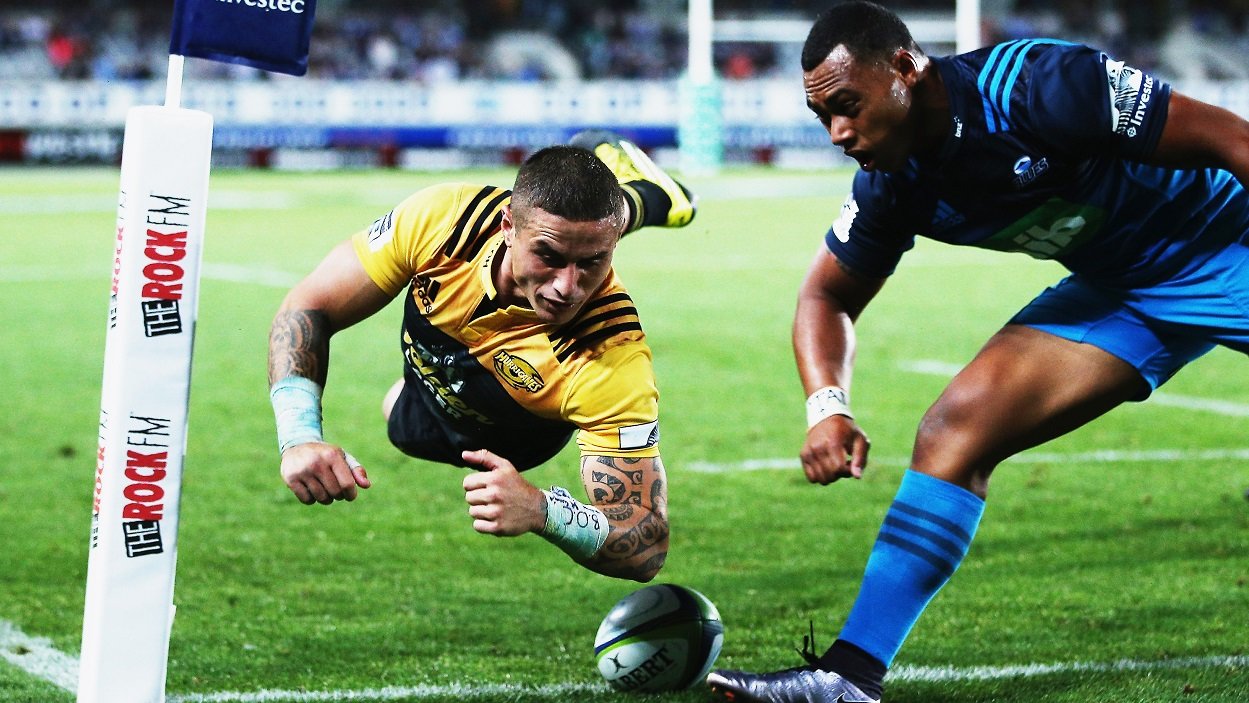Four Games, Four Tries, Four Refereeing Controversies

Questionable refereeing calls had a big influence on the weekend’s Super Rugby results. Scotty Stevenson weighs in on whether we need to change the competition’s TMO system, or even overhaul rugby’s rules.
Pressure. There was plenty of it in round three. There was pressure on the Hurricanes to get a first victory in 2016, and plenty of pressure to deal with in the closing stages of their match against the Blues at Eden Park, when the home side camped on their goal line and continued to opt, unsuccessfully, for a lineout drive against probably the best lineout drive defence in the competition.
There was pressure on the Reds’ new head coaching duo of Matt O’Connor and Nick Stiles after the club sacked coach Richard Graham at the beginning of the week. There was pressure on the Cheetahs to win against the competition new boys, the Sunwolves, in Singapore. There was pressure on the Lions to maintain their unbeaten start to the season, and there was pressure on the Brumbies to prove they are an unbeatable prospect for their conference opponents.
Yes, so much pressure. And even more on the refereeing teams. Round three featured four controversial tries that brilliantly illustrated rugby’s endlessly confusing and complicated laws, and the ongoing problems referees have interpreting them. There were tries that, on balance, could easily not have been awarded, and what material impact would that have made on the games?
The first came on Friday night when Ardie Savea looked to have knocked the ball on as he scooped it up close to the Blues’ goal line. He subsequently passed the ball to halfback TJ Perenara who scored in the corner for the Hurricanes, giving them a crucial lead in a tight and torrid match.
The Television Match Official (TMO), Shane McDermott, looked at slow motion replays which appeared to show a distinct loss of control from Savea, but then reverted to real time replays which he used to justify his call to allow the try to stand. Was he right to do this? Hurricanes fans would believe so. Though it does raise an issue around the use of technology. The whole idea, one would think, of being able to use television pictures to make decisions must in some way be based on the notion that it allows for slow motion to detect indiscretions that real time vision can’t. if that is to be ignored, must all calls be made in real time?
Time was also a factor in the momentum-changing try to Highlanders’ captain Ben Smith early in the second half against the Lions on Saturday. Smith, always quick to spot an opportunity, decided to make a quick throw-in to halfback Aaron Smith after the Highlanders had tackled Lions’ winger Ruan Combrinck into touch. All good, but for the fact Smith appeared to take the throw from in front of where Combrinck crossed the touch line.
The rules around quick throws are fairly simple: a player can take one only before a lineout has formed, and from anywhere between where the ball crossed the touch line and the player’s own goal line. In this case, Assistant Referee Jamie Nutbrown had no chance to get the right spot before Smith’s throw which appeared to have been taken from in front of the where the ball crossed the touch line, albeit by the smallest of margins. It was a great play from both Smiths but again could well have been ruled out on a technicality.
It was another technicality, this time in the maul, that was not ruled on in Melbourne on Saturday as the Reds crashed over for a try that gave them every chance at victory over the Rebels. The Reds sniffed a comeback with a driving maul try to young 22-year old hooker Andrew Ready but the try should have been disallowed, and a penalty awarded to the Rebels.
Here’s why: The rules around driving mauls were clarified at the start of this season to make it illegal for any player to enter a maul in front of the ball carrier. This is exactly what Reds’ skipper Rob Simmons did, and Ready was able to stay at the back of the maul and fall over the line. Simmons was in the referee’s blindspot when he joined the maul, but these are the plays that desperately require intervention from the sideline or from the TMO booth.
Unless of course you’re a Stormers fan. The most controversial call of the weekend involved TMO Marius Jonker and New Zealand referee Mike Fraser in Capetown. In what was a traditionally rugged and uncompromising match between the Stormers and the Sharks, Siya Kolisi was yellow carded for intentionally kicking the ball out of the hands of Sharks halfback Cobus Reinach as he reached to score a try.
Referee Mike Fraser rightly sought intervention from Jonker, asking if the ball had been kicked out of the hand by the Stormers player. The question was accurate, but for one key word: “intentionally”. Jonker recommended a penalty try and therefore Kolisi was handed a statutory yellow card. It was a massive turning point in the match, and one that left Stormers’ veteran Schalk Burger shaking his head in disbelief.
There is absolutely no way a refereeing team is going to get every call right in any given game, and they should not be expected too. Rugby is a game that is becoming increasingly difficult to manage for the man in the middle. However, when four of the most crucial tries in the round can be called into question, it does make you wonder whether a dual referee system is too far away.
Either that, or whether the laws themselves are well overdue for some serious simplification.



























